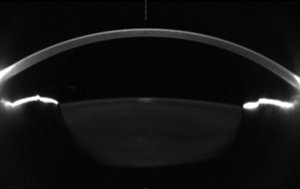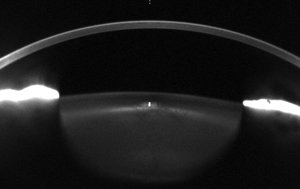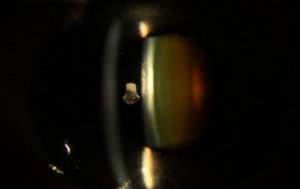Refractive lens exchange [RLE]
What is Refractive Lens Exchange [RLE]?
Refractive Lens Exchange, also called lens replacement surgery or clear lens extraction. This is where the aging lens is replaced with a new lens. Like the lenses in your eyeglasses, your implant will contain the correct prescription to give you the best possible vision. With advancements in lens technology it is now possible to have high quality vision for both far and near. Refractive Lens Exchange (RLE) is an increasingly popular LASIK alternative for patients over 40 suffering from presbyopia.
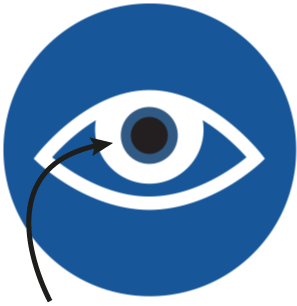
How long does Refractive Lens Exchange last? Can I get a cataract after RLE?
RLE is a permanent solution that prevents the formation of a cataract. This provides long-term freedom from wearing eyeglasses and means you will never need cataract surgery later in life, nor will you experience cataract symptoms such as blurry vision and glare at night.
Who is a good candidate for RLE?
RLE may be a better option than refractive surgery [Lasik or PRK] for patients with
- High Refractive Errors Including Nearsightedness and Farsightedness
- Poor LASIK Candidates Due to Inadequate Corneal Thickness
- Dry Eyes
- Contact Lens Intolerance
- Worsening Presbyopia (inability to see near)
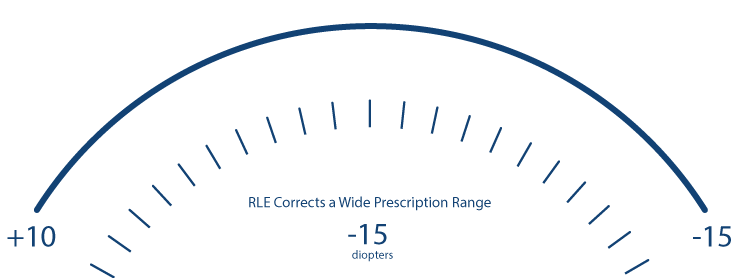
What is presbyopia?
Unfortunately, the bad news is as we age, so do our eyes. By the time we reach our early 40s, we find ourselves holding newspapers, menus, and books farther away from our eyes. Struggling to see the computer makes us sit farther away from the screen. We simply can’t make out words when they are close to our eyes. This condition is called presbyopia (pronounced pres-BEE-opia). Presbyopia is not a disease but a stiffening of the natural lens. As the lens hardens it becomes less flexible. This reduces the eye’s ability to switch from seeing distance objects to seeing near objects.

What are some treatments for presbyopia?
As small print becomes increasingly hard to read, dependence on reading glasses occurs. Even if you haven’t suffered from being nearsighted or farsighted, everyone will eventually develop presbyopia, and will need readers. If you are a LASIK candidate a monovision correction could be performed where one eye is focused for the distance and the other for intermediate to near vision. The drawback is it doesn’t prevent future cataract surgery and is not the best option if you have dry eyes.

How can RLE fix Presbyopia?
The good news is due to advances in technology these “over 40” vision problems can be fixed with RLE with use of the Symfony Lens. The Symfony Intraocular Lens [Johnson & Johnson Vision] unlike “single vision” lenses, is designed to help patients see over a range of distances. It provides high quality vision from the far distance to about arm’s length to minimize the use of eyeglasses. To keep it simple, the Symfony Lens is like wearing a +1.5 D reading glass. This gives good intermediate performance while maintaining excellent distance vision.

1. Tiny circular grooves extend the range of vision
2. Haptics, or side struts, hold the lens in place

“Minimizes the use of eyeglasses.”
How Safe is RLE? What are the risks?
The risks for RLE are the same as cataract surgery. In the United States, around 4.0 million cataract surgeries are done per year. This is a well-established, safe, and effective surgery with a 98% percent success rate.

What are the visual outcomes of RLE?
A recent study of RLE with the Symfony IOL found 97% of patients achieved binocular uncorrected distance VA ≥ 20/25 and 85% achieved uncorrected near VA ≥ 20/40.
RLE Visual Outcomes Following Implantation of the Symfony IOL [n=2018 eyes]
- 97% Achieved Visual Acuity of ≥ 20/25
- 91% of patients would recommend the procedure
- 85% Achieved Near Visual Acuity of ≥ 20/40
“97% Achieved Visual Acuity of ≥ 20/25!”
What is Dysfunctional Lens Syndrome [DLS]? What is Dysfunctional Lens Replacement?
DLS is a new term used to describe age-related vision difficulties that result in loss in clarity of both near and far vision acuity. DLS describes a spectrum of changes that occur with age including presbyopia and loss of image quality. This condition brings relevance to the symptomatic visual changes that occur with age. It can also be described as a “early cataract or pre-cataract” stage but these terms imply the only option is to wait for the pre-cataract to ripen, delaying surgery by 5 to 10 years. Dysfunctional Lens Replacement is a new term that describes that treating near vision difficulties with a new intraocular lens.

How is Dysfunctional Lens Syndrome Diagnosed?
Through our Ocular Analysis Eye Exam we can look beneath the surface of the eye to assess the changes in the natural lens of the eye. With age there is a progression in DLS from Stage 1 to Stage 3.
- Stage 1 [Presbyopia]:
- Lens is clear, but begins to lose flexibility
- Readers or bifocals are needed
- Stage 2:
- Lens continues to stiffen and begins clouding
- Causes halos, glare, and decreased vision quality
- Difficulty with night driving and reading in dim light
- Stage 3 [Cataract]:
- Lens has developed into a cataract
- Increasing light scatter causes difficulty reading in low light and driving at night
- Significant functional decrease in reading and distance vision
Imaging Detects DLS

How Much Does Refractive Lens Exchange Cost?
Clear lens exchange is not covered by insurance but Dr. Anderson offers affordable RLE surgery starting at $2500 per eye for a single vision lens.
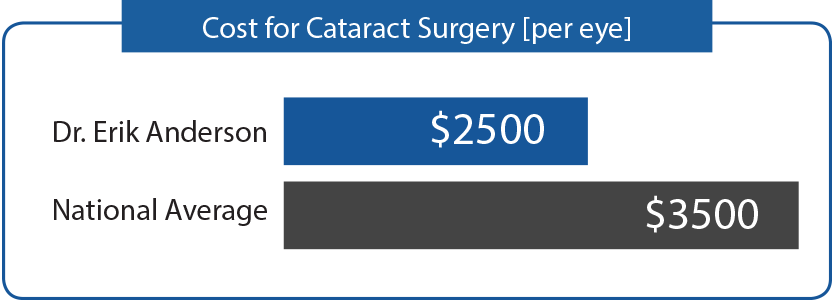
Schedule an Eye Exam with Dr. Anderson to Determine if you are a Refractive Lens Exchange Candidate.
Erik Anderson MD


